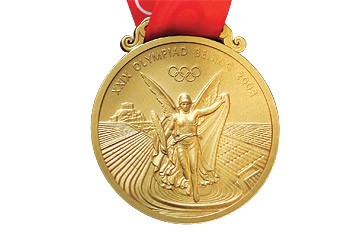
More than 10,000 athletes will participate in the Games of the XXIX Olympiad in Beijing, where they'll run and swim and jump their way to some 3,000 medals. Each of them will be searching for gold. Barring that, they'll begrudgingly take silver or bronze. For while outwardly they may profess joy in the spirit of athletic competition, inwardly they all desire the same thing: a hunk of metal around their neck.
The ancient Greeks, whose Olympiads can be traced back to 776 B.C., didn't give out medals but rather bestowed olive wreaths upon their victors. The medal tradition began with the first modern Olympic Games in 1896, where winners got silver, seconds got bronze and third place got zip. In the intervening 112 years, the coveted awards have been rectangular, ridged, doughnut-like, gilded and--for the 1972 Sapporo Winter Games--shaped like an amorphous blob. At the 1900 Paris Games, some events forwent medals in favor of prizes: one pole-vault runner-up won an umbrella.
Today's gold medals are actually silver covered with about 6 grams of 24-karat gold. Winter Olympic medals have no standard design, hence their strange shapes and nontraditional materials, like those of the 1992 Albertville medals, which were mostly glass. Summer medals, however, almost always depict Nike, the winged goddess of victory, on their front in some fashion. Since 1972, host cities have designed the medals' back. This year Beijing represented Chinese culture with a ring of jade inlay.
At their most idealistic, the Olympics are supposed to unite the world through sport. Yet any witness to the international medal race knows different--governments take these prizes seriously. So do their athletes. As American four-time discus champion Al Oerter once put it, "These are the Olympics. You die before you quit."
